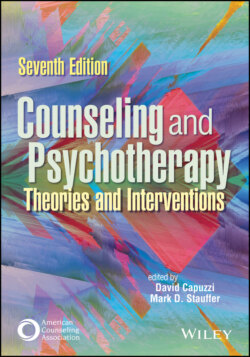Читать книгу Counseling and Psychotherapy - Группа авторов - Страница 146
Clients With Serious Mental Health Issues
ОглавлениеPast experiences provide valuable insight into the client’s current functioning and object relations themes and may be included in a dialogue with the client to meaningfully frame current difficulties in the context of contributed experiences. This concept provides the foundation for the counselor working with clients with challenging diagnoses and serious mental health issues. Using a psychodynamic model, the counselor focuses on a core segment of the client’s interpersonal functioning, which is closely connected with the presenting symptoms causing functional impairment. The unconscious, recognizable as urges and impulsivity or a flattened affect, remains the primary focus of treatment, and the aim in the treatment of serious mental illness is to trace the overt symptoms of the diagnosis back to their unconscious origins and analyze them through the use of rational thought and processing. This is an active and directive process for the counselor in the beginning, and the goal is to develop a sense of stability in the client by creating a conscious link between historical processing and current circumstances, thereby synthesizing personality components into one functional unit as the client develops a sense of empowerment (see Sidebar 3.2).
Traditional psychoanalytic theory suggests that all psychological disorders are the result of unconscious conflicts manifesting in emotional dysregulation with behavioral consequences, which cause intrusions of hidden drives into voluntary behavior when defense mechanisms fail. Current approaches consider all presenting symptoms meaningful and relevant to the client’s subjective experience and are therefore useful in treatment. Brief psychodynamic approaches have emerged from traditional psychoanalytic theory with clinical success among populations diagnosed with serious mental health disorders, including chronic depression, borderline personality disorder, and posttraumatic stress disorder. The emphasis on insight varies by client functionality, and the focus remains on transference and countertransference, with consideration placed on the event, neuropsycho-logical function, and current circumstances (Bond, 2006). Current psychodynamic approaches that emphasize time limit, therapeutic focus, and counselor directiveness are particularly relevant for addressing disorders that require intensive intervention (see Sidebar 3.3).
